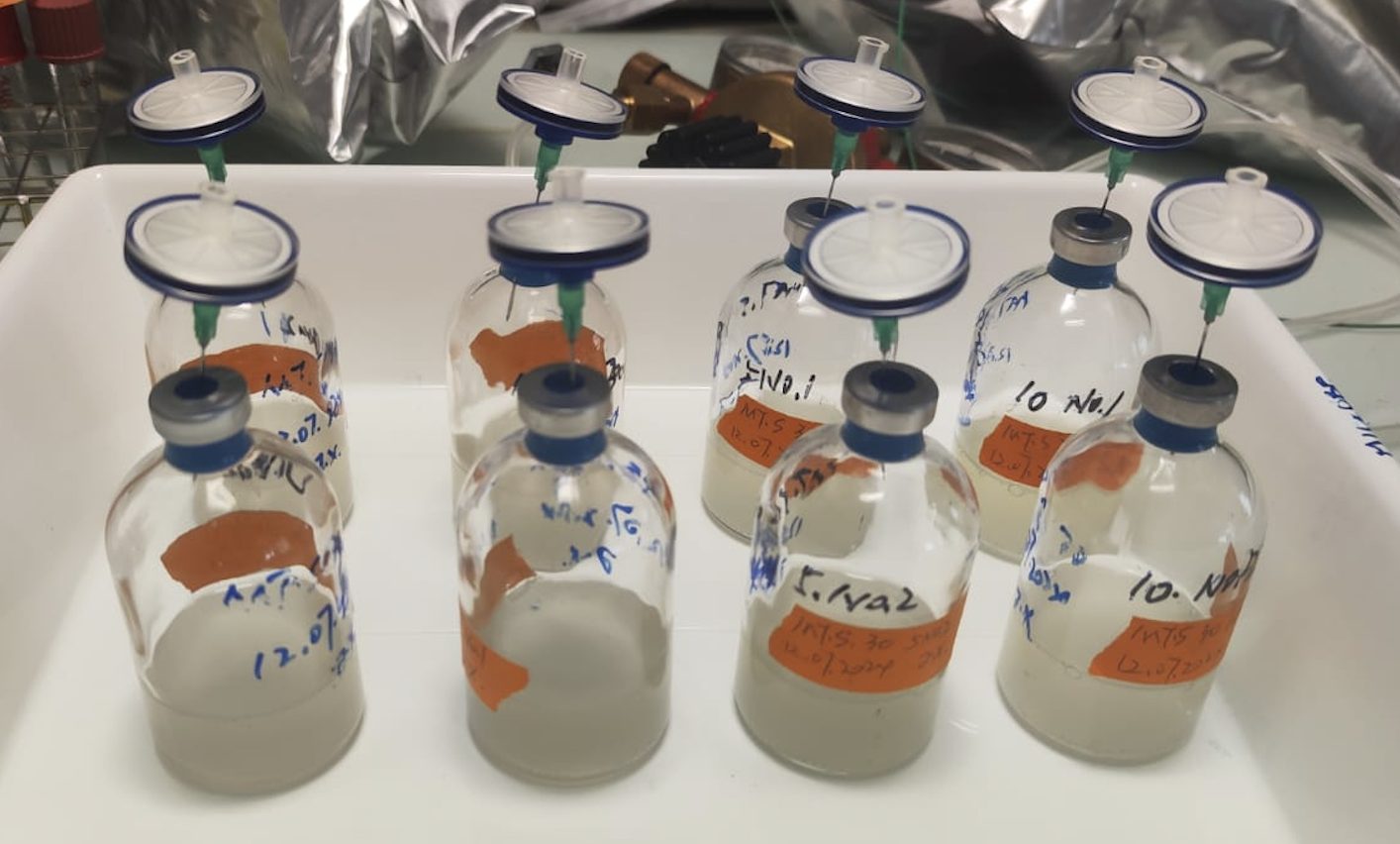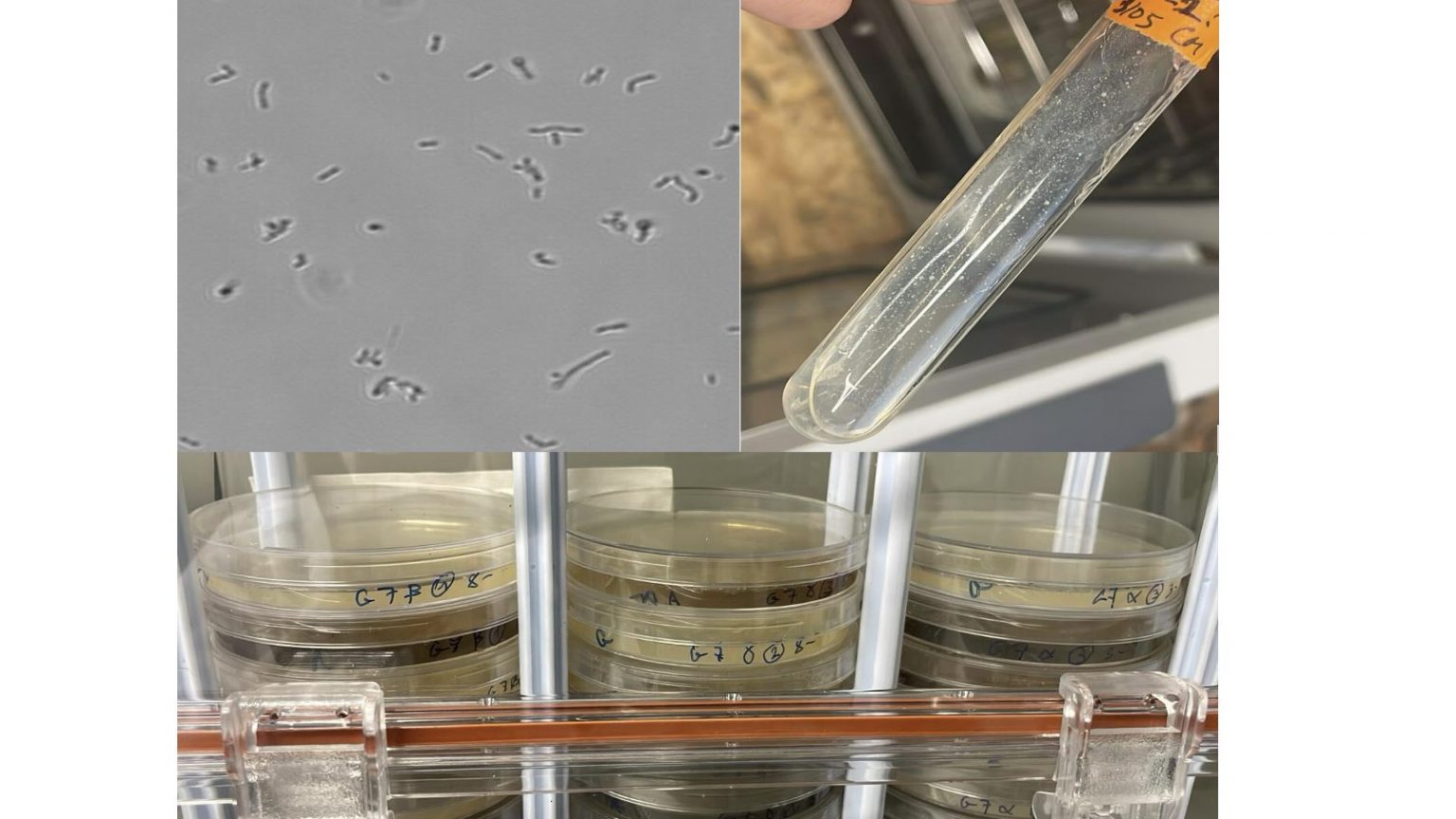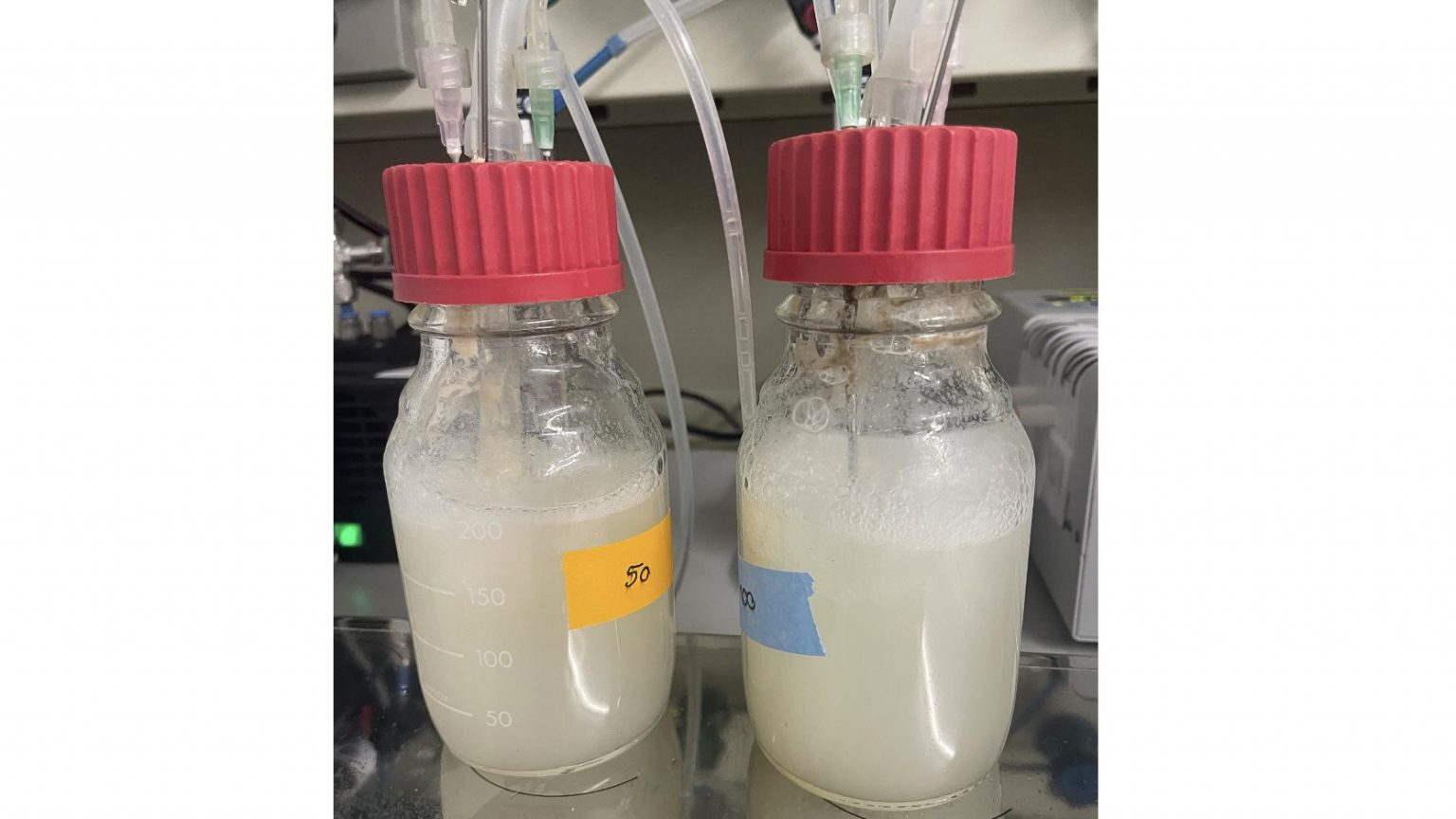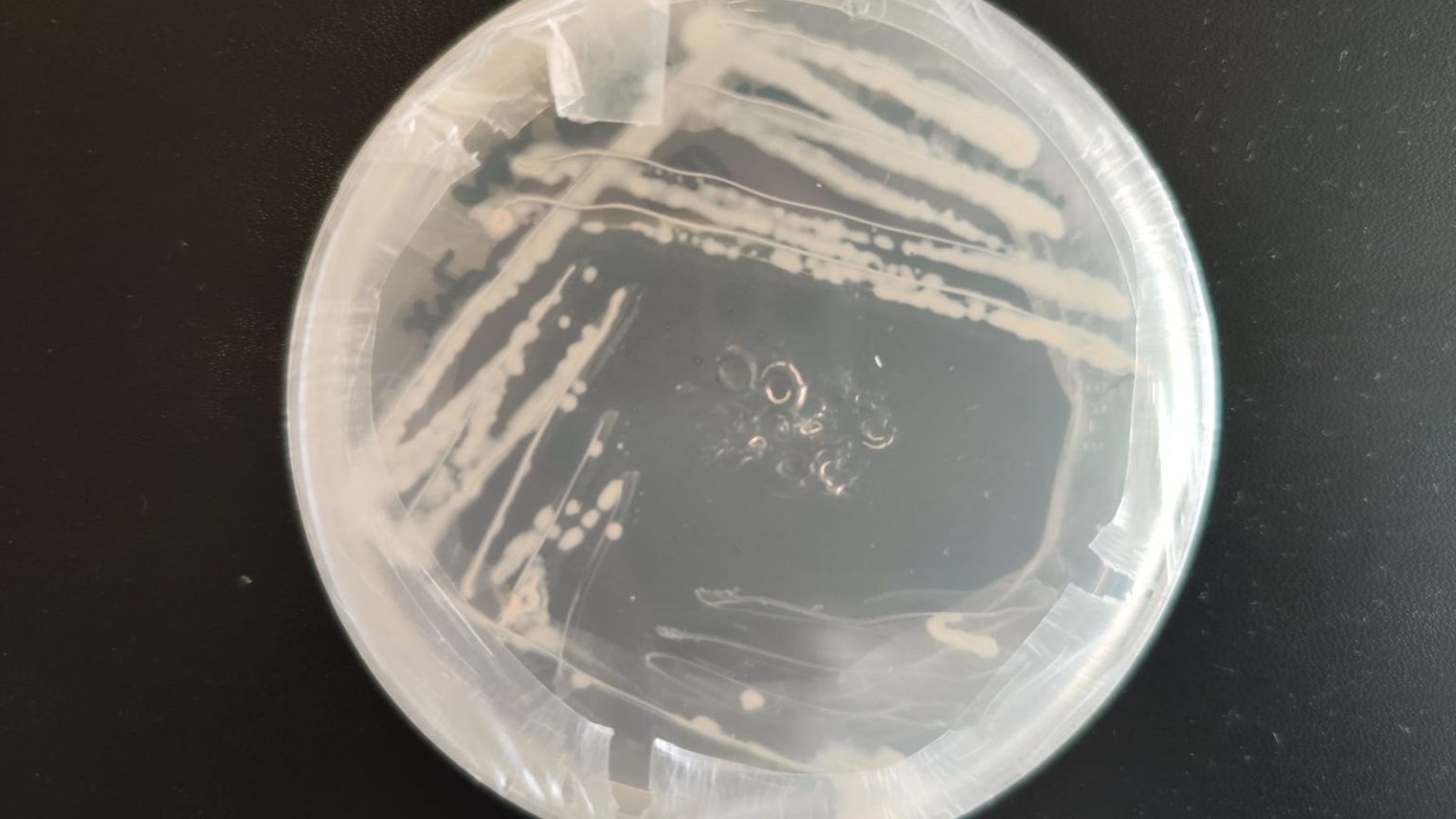Research topics
We study the physiology of microbes to elucidate the fundamental principles of microbial processes. Our research aims to enhance the use of microbes for energy capture, environmental remediation, and improving human health.
Microbial CO₂ reduction

methanogen cultures
| Microbial CO₂ reduction by H₂ in methanogens and acetogens offers a sustainable pathway for energy and chemical production, particularly when paired with green hydrogen. Green hydrogen, produced by splitting water using renewable energy, provides a clean H₂ source for these microbes, enabling CO₂ conversion without fossil fuels. Methanogens convert CO₂ and H₂ into methane, a potential clean energy carrier, while acetogens produce acetate, a valuable chemical precursor. Together, these processes contribute to a circular carbon economy by recycling CO₂. Understanding these microbes’ physiology is key to developing robust bioprocesses. In addition, methanogens and acetogens play crucial roles in anaerobic food chains for organic waste degradation, as well as in human gut microbiomes, where they modulate energy harvest and microbiome function. Our group is developing mechanistic understanding of these microbes’ resource allocation strategy in dynamic nutrient conditions. We aim to guide efficient bioprocess design and advance knowledge of microbial function and adaptability. |
Anaerobic digestion microbiome ecology

enrichment cultures and isolation
| Anaerobic digestion is a widely adopted waste treatment and resource recovery technology that reduces waste volume and produces biogas as an energy source. This process relies on a diverse consortium of microorganisms that work together to degrade biopolymers in the absence of oxygen, forming complex microbial interactions. There is growing interest in waste refinery within the circular economy, which has highlighted anaerobic digestion’s potential to generate higher-value, reduced chemicals, such as carboxylic acids, from waste streams. We work on understanding the ecological principles and ecophysiological regulations that drive digestion functionality. By deepening insights into these microbial systems, we aim to support microbiome engineering and process fine-tuning, enhancing anaerobic digestion’s application for sustainable waste-to-resource solutions. |
Enriching bioplastic-producing microbe

bioreactors
| Producing polyhydroxyalkanoates (PHA, bioplastic) using organic acids from anaerobic digestion of waste offers a sustainable resource recovery method. This approach supports waste management while generating valuable bioplastics. It has been found recently that PHA-storing bacteria can be selected in chemostat, steady-state conditions under certain nutrient limitation, which simplifies process design as compared to the traditional fed-batch selection. We are collaborating with Dr. Nicolas Derlon at EAWAG to study the physiology of PHA-accumulators to understand the selection mechanism in steady-state. |
Aerobic methane oxidizers

methanotroph plate
| Methane-oxidizing bacteria, or methanotrophs, play a critical role in reducing atmospheric methane, a potent greenhouse gas with a global warming potential 84-87 times that of CO₂ over a 20-year period. Methanotrophs oxidize methane to CO₂ under aerobic conditions. We are isolating methanotrophs and investigating their physiology to expand our understanding of their niche and activity. Our goal is to increase their abundance and activity in the environments to enhance methane elimination. Understanding the metabolic pathways and ecological factors that optimize their methane consumption can help harness their potential as natural methane filters. |